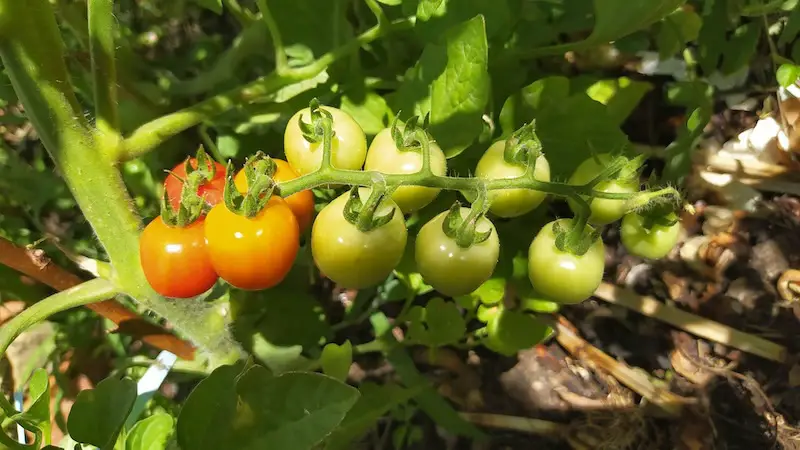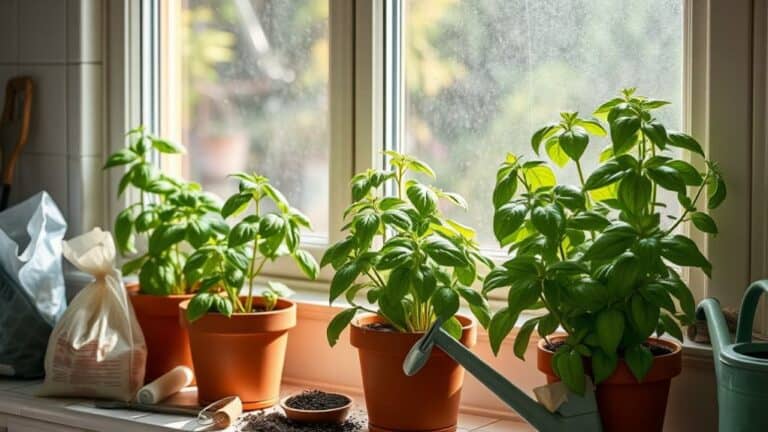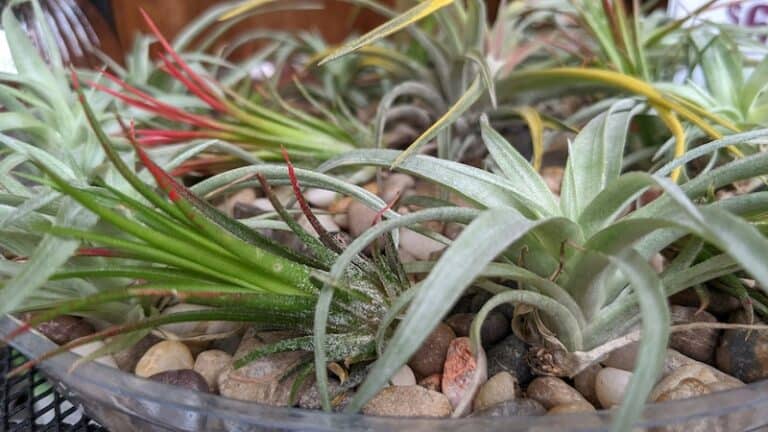9 Plants You Should Never Grow Near Your Tomatoes
Tomatoes are a staple in many gardens, prized for their juicy fruits and versatile culinary uses. However, their health and productivity can be significantly impacted by the plants grown nearby. Certain plants can compete for nutrients, attract pests, or spread diseases that negatively affect tomatoes.
9 Plants You Should Not Grow Near Tomatoes
Here are nine plants you should avoid growing near tomatoes:
1. Cabbage
Cabbage and its relatives, including broccoli, Brussels sprouts, and cauliflower, are heavy feeders that can outcompete tomatoes for nutrients. These plants belong to the Brassicaceae family and require similar nutrients from the soil, leading to nutrient depletion. Additionally, cabbage and its kin can attract pests like cabbage worms and aphids, which can then migrate to tomato plants. Furthermore, cabbage can hinder tomato growth due to its allelopathic properties, releasing chemicals into the soil that inhibit the growth of nearby plants.
2. Corn
Corn and tomatoes should never be planted together due to their mutual susceptibility to the corn earworm (Helicoverpa zea), which is also known as the tomato fruitworm when it infests tomatoes. This pest can cause significant damage to both crops. Additionally, corn grows tall and can shade out tomato plants, reducing their access to sunlight. This shading can hinder tomato plant development and fruit ripening, leading to poor yields.
3. Dill
While young dill plants can actually benefit tomatoes by attracting beneficial insects, mature dill plants can become a problem. Mature dill can secrete chemicals that inhibit tomato growth. Additionally, dill can grow quite tall and dense, competing with tomatoes for sunlight. Dill also attracts tomato hornworms, which can devastate tomato plants by feeding on their leaves and fruits.
4. Fennel
Fennel is known for its strong allelopathic properties, releasing substances that inhibit the growth of many other plants, including tomatoes. When planted near tomatoes, fennel can stunt their growth, reduce fruit production, and even kill young tomato plants. Fennel attracts certain pests that can also harm tomatoes, compounding the negative effects.
5. Kohlrabi
Kohlrabi, another member of the Brassicaceae family, competes with tomatoes for nutrients and space. Its robust growth can overshadow tomato plants, reducing their sunlight exposure. Like cabbage, kohlrabi attracts pests that can move on to tomato plants. Its dense foliage can also create a humid microenvironment, encouraging fungal diseases that affect tomatoes.
6. Potatoes
Potatoes and tomatoes are both members of the Solanaceae family, making them susceptible to the same diseases, such as blight. Planting these two crops together can lead to a rapid spread of diseases like late blight (Phytophthora infestans), which can devastate both crops. Potatoes can also attract pests like Colorado potato beetles, which will readily feed on tomato plants.
7. Walnut
Walnut trees, particularly black walnut, produce a chemical called juglone that is highly toxic to many plants, including tomatoes. Juglone is present in all parts of the walnut tree, including leaves, bark, and roots, and can persist in the soil. Tomato plants exposed to juglone often exhibit symptoms of wilting, yellowing leaves, and stunted growth. Therefore, it is crucial to avoid planting tomatoes near walnut trees or in soil where walnut trees have been grown.
8. Pepper
Like tomatoes, peppers belong to the Solanaceae family and share similar growing conditions and susceptibilities. When planted together, they can compete for the same nutrients, leading to nutrient deficiencies. Moreover, they can share diseases and pests, such as aphids, whiteflies, and various fungal infections, which can spread rapidly between the two crops and lead to significant losses.
9. Eggplant
Eggplant is another member of the Solanaceae family that should be kept away from tomatoes. Both crops are susceptible to similar diseases, including verticillium wilt, fusarium wilt, and bacterial wilt. Planting eggplants near tomatoes can facilitate the spread of these diseases. Additionally, they share common pests such as flea beetles, which can quickly move from one plant to another, causing extensive damage.
9 Companion Plants for Tomatoes
While some plants should be kept away from tomatoes, there are several companion plants that can enhance tomato growth, health, and productivity. These plants can help by repelling pests, attracting beneficial insects, or improving soil quality.
1. Basil
Basil is one of the best-known companion plants for tomatoes. It repels various pests, including aphids, whiteflies, and mosquitoes, while attracting beneficial insects like bees and butterflies, which help with pollination. Some gardeners believe that basil enhances the flavor of tomatoes grown nearby. Additionally, basil’s compact growth habit does not compete heavily with tomatoes for space or nutrients.
2. Marigold
Marigolds are excellent companion plants for tomatoes due to their ability to repel nematodes, which can damage tomato roots, and other pests like aphids and whiteflies. The strong scent of marigolds masks the smell of tomato plants, making it harder for pests to locate them. Marigolds also attract beneficial insects such as ladybugs and hoverflies, which prey on common tomato pests.
3. Garlic
Garlic is another beneficial companion for tomatoes. It deters spider mites, aphids, and other harmful insects. Garlic also has antifungal properties that can help protect tomatoes from fungal infections. Additionally, garlic’s shallow root system does not compete with tomatoes for nutrients or space. Planting garlic near tomatoes can also improve the overall health of the soil by providing natural pest control.
4. Borage
Borage is a herb that attracts pollinators such as bees, which are essential for tomato plant pollination. Borage is also believed to improve the growth and flavor of tomatoes. Its deep roots help to aerate the soil and bring up nutrients from lower soil layers, benefiting the tomatoes planted nearby. Additionally, borage acts as a deterrent to tomato hornworms.
5. Nasturtium
Nasturtiums are great companion plants for tomatoes because they act as a trap crop, attracting aphids, whiteflies, and other pests away from the tomatoes. They also deter cucumber beetles and other pests that can damage tomatoes. Nasturtiums are easy to grow and can spread quickly, providing ground cover that helps to suppress weeds and retain soil moisture.
6. Carrots
Carrots and tomatoes make good companions as they grow well together without competing for the same nutrients. Carrots help to loosen the soil, making it easier for tomato roots to penetrate. They also provide ground cover that helps to keep the soil cool and moist. Additionally, carrots can benefit from the shade provided by the taller tomato plants.
7. Parsley
Parsley is a beneficial companion plant for tomatoes, attracting predatory insects such as hoverflies and parasitic wasps that feed on aphids and other tomato pests. Parsley’s compact growth does not compete heavily with tomatoes for space or nutrients. It can also help to improve the flavor of tomatoes grown nearby.
8. Asparagus
Asparagus and tomatoes are good companions because they benefit each other. Tomatoes help to repel asparagus beetles, while asparagus deters nematodes that can harm tomato plants. Asparagus has a deep root system that does not compete with tomatoes for nutrients, making them excellent companions.
9. Onions
Onions are effective in repelling various pests that can damage tomato plants, including aphids, thrips, and mites. They have a shallow root system that does not compete with tomatoes for nutrients or water. Onions also help to improve the overall health of the soil and can be harvested early, allowing tomatoes to take over the space as they grow larger.
Conclusion
In conclusion, growing tomatoes successfully requires careful consideration of their companion plants. Avoiding certain plants that compete for nutrients, attract pests, or spread diseases can significantly improve tomato health and yield. Conversely, choosing the right companion plants can provide natural pest control, enhance soil quality, and boost tomato growth and flavor. By understanding which plants to avoid and which to include in your garden, you can create a thriving and productive tomato patch.







